在麓湖A7水镇,关于游戏化的城市空间的试验
In LUXELAKES A7 Water Town, an experiment on gamified urban space
本研究成果为MIT X JUND X麓湖A8设计中心联合课程Urban Hacking Chengdu五个研究成果之一。研究以麓湖A7水镇为样本空间,探讨现实世界和虚拟世界的协同与互动,利用交互式装置与游戏化体验激活线下空间和社区参与。在此研究成果之上,A8设计中心会进一步深化,结合A7水镇酒店岛产业定位及商业策略,探讨未来实际应用可行性。
This research result is one of the five research outcomes of the joint course “Urban Hacking Chengdu” by MIT X JUND X A8 Design Center. Taking LUXELAKES A7 Watertown as the research object, the study explores the collaboration and interaction between the physical world and the virtual world, and employs interactive devices and gamification experience to activate spaces and community participation. Based on the research result, A8 Design Center will further deepen and discuss the feasibility of future practical application by combining the industrial positioning and business strategy of A7 Watertown Hotel Island.
未来,麓湖将为年轻,具有全新生活观念和国际视野的主理人,去打造更契合他们想法生成落地的商业孵化平台,并给予空间、品牌及运营的支持,来呈现出更有趣有料的商业场景,实现产学研商的完整转化。
In the future, LUXELAKES will create a business incubator platform suitable for young people with new life concepts and international visions, provide space, brand and operation support to present more interesting and promising business scenes, and realize complete transformation of industry, education, research and business.
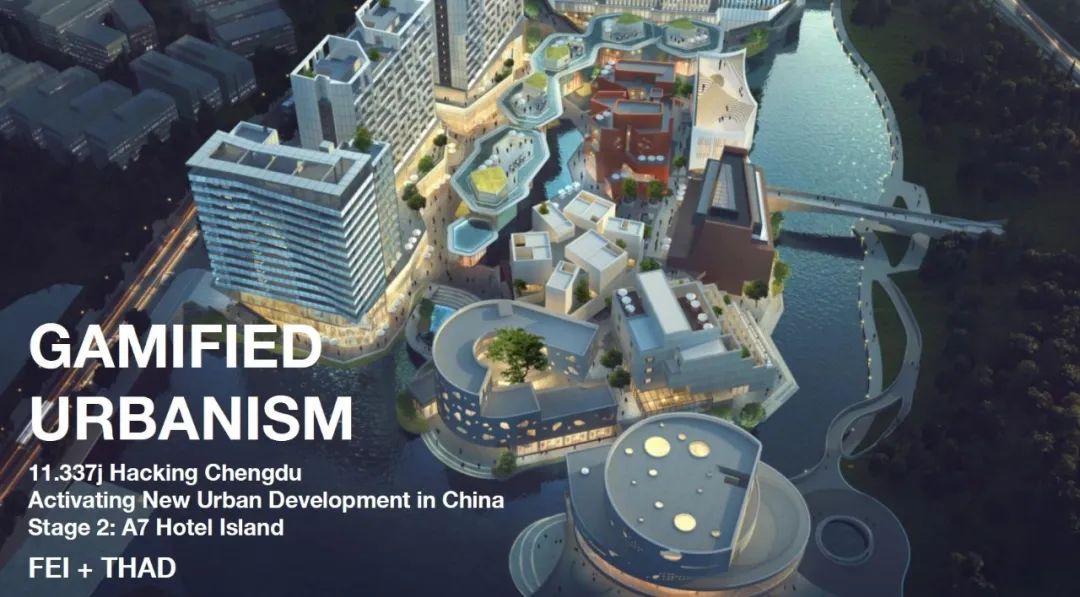
Luxelakes Gamified Urbanism:
Activating New Urban Development in China
Designers:
En-Han Thaddeus Lee, Zhifei Xu


设计的目标是将都市体验游戏化以解决中国的空城问题。游戏化是一个新潮的设计策略,因其利用游戏体验来激励个人为群体或公共目标做出贡献而备受关注。设计师将麓湖设想为游戏化的实验田,为A7酒店岛设计了一系列交互式装置以激活公共空间并鼓励游客之间的互动。除此之外,设计师还为装置设计了一系列配套的数字内容来增强实际环境的都市体验,并将其作为一种手段来引导已经充斥着丰富设计的城市空间。设计师相信,城市游戏化的策略可以应用到更多现有的和未来的中国城市,也可以成为将智慧城市引入建成环境的有效手段。
The project applies the strategies of urban gamification to address ghost city issues in China. Gamification is a trending design strategy that’s garnering attention for its ability to utilize the experience of play to incentivize individual contributions toward groups or public goals. Taking Luxelakes as our experimental grounds, the designers are designing a series of interactive add-on installations for A7 hotel island with the aim of invigorating communal spaces, encouraging interactions among visitors and transforming public places into shared, participatory forums and playgrounds. The designers are also designing a series of digital interfaces to augment the experience of the physical environment as a means to navigate an already design-rich urban space. The designers believe that urban gamification methods can be applied to many more existing and future Chinese cities and can be an effective means to introduce Smart City technologies into our urban environment.

成功的游戏化可以将品牌定义为非居民的目的地,而对于居民来说,成功的游戏化则将把公共场所变成共享的、参与式的论坛和游乐场。那么,研究问题就变成了:如果麓湖的地产就是个类似游戏的环境,那么城市游戏化可以如何提高业主的参与度和对地产本身的增值?设计师将研究方法细化为五个策略:游戏化的规划设计、游戏化的吉祥物、游戏化的生活方式、游戏化的城市体验、游戏直播。由于城市游戏化是一个非常广的研究话题,所以设计师提出的策略是针对项目的不同阶段提出的。在设计阶段,鼓励用户参与的游戏,在早期就加入居民的意见,鼓励用户参与。在项目建设之后,游戏化广播,也就是把麓湖的生活方式包装成游戏,并以真人秀的形式进行播放,比如说用真人秀的形式来吸引游客到访。游戏化城市体验主要针对现有公共空间的入住后,设计师可以有策略地插入游戏化的物品,鼓励人与建筑环境的互动。游戏化的生活方式更多的是将智慧城市的理念融入到维护和社区建设中。通过整合服务和数据采集,让麓湖生活变得更智能。基于任务和金钱的参与模式,可以鼓励居民参与,为维护基金带来收益。最后,设计师认为麓湖的下一代吉祥物将成为以上所有服务的形象,强化游戏化的方式,增加麓湖的品牌效应。因为设计师在游戏化的整体框架下提供了很多的想法,所以制作了这个图来帮助阐明思路。外侧矩形图中的内容是较长期的策略,设计师对其进行了低分辨率的研究,提供了思路和案例分析,而内侧矩形图中的内容则是更多的策略性的干预,设计师对其进行更详细的研究,并会制作出原型作为概念验证。
Successful gamification will define the brand as a destination for non-residents, and for residents, transform public places into shared, participatory forums and playgrounds. So, the research question becomes: IF the Luxe-Family Development is just like a gaming environment, how could urban gamification increase homeowner engagement and value-add to Luxelake? The designers have refined the approach to include five strategies: Gamified Planning & Design, Gamified Mascot, Gamified Living, Gamified Urban Experience, and Game Broadcasts. Since urban gamification is a very large topic, the proposed strategies are meant for different phases of a project. During the design phase, the designers are proposing games that encourage user participation, incorporating resident input early on. After construction, game broadcast, which means packaging the Luxelake Lifestyle as a game and broadcasting that in the form of for example a reality show, which can be used to attract visitors to the estate. Gamified Urban Experience focuses on post-occupancy for existing public space, where designers can strategically insert gameful objects, encouraging interaction between people and the built environment. Gamified Living is more about integrating smart city concepts for maintenance and community building. With integrated service and data collection, the LuxeLakes Life gets smarter. Task and money based engagement models can encourage resident participation and generate revenue for the maintenance fund. And overall, the designers think it’s would be a good idea for Luxelake to have a next-generation mascot which would become the image of all the services above, strengthen the approach of gamification and increase the LuxeLakes branding effect. Since the designers are providing a lot of ideas under the overall umbrella of gamification, this diagram is produced to help clarify the ideas. The content in the outer rectangles are longer term strategies, which the designers have done a low-resolution study about, providing ideas and case studies, while the content in the inner rectangles are more tactical interventions on the current situation, which we are studying in more detail and producing prototypes for as proof of concept.
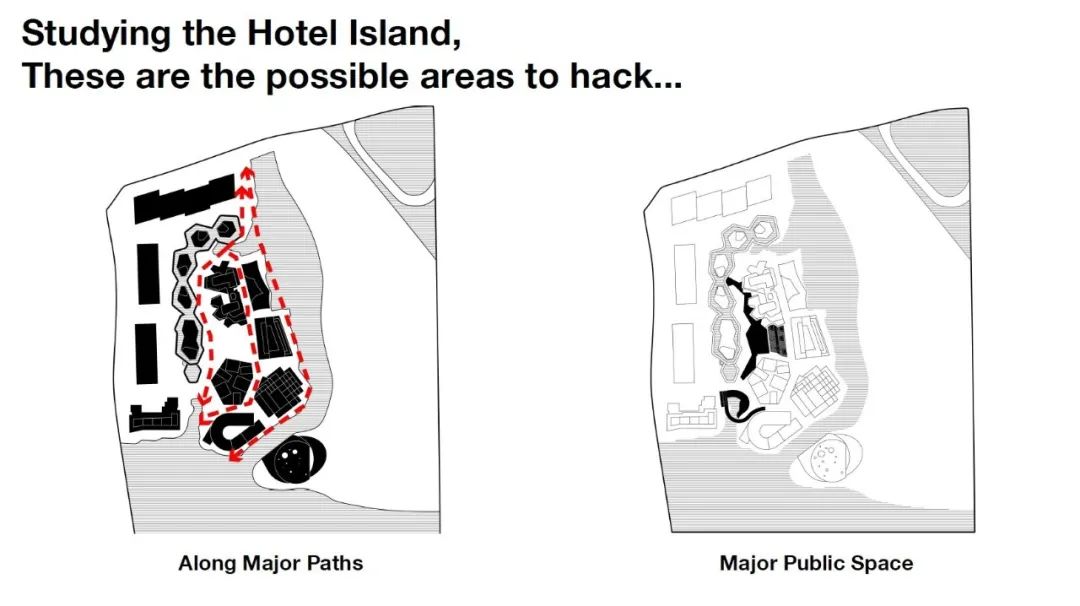
这个酒店岛是麓湖给到设计师的设计场地。在这小小的地块上,已经可以看到很多不同的设计语言,各种不同的形状。由于设计语言已经很嘈杂,所以设计师的设计提案摈弃形式方面考虑,从一个更加偏向“基建”的角度来考虑。在研究了酒店岛总平后,设计师标注出了这些可能“侵入”的区域。一是沿着主要的道路,二是可以在主要的公共空间中进行......
This is the given site, where it can be seen that on this small piece of land there are already a lot of different design languages going on. There are different shapes all over the places. And since the design language is already quite noisy, the designers are proposing to take an infrastructural approach. Studying the Hotel Island, These are the possible areas to hack. One is along the main paths, and others can take place in major public spaces…
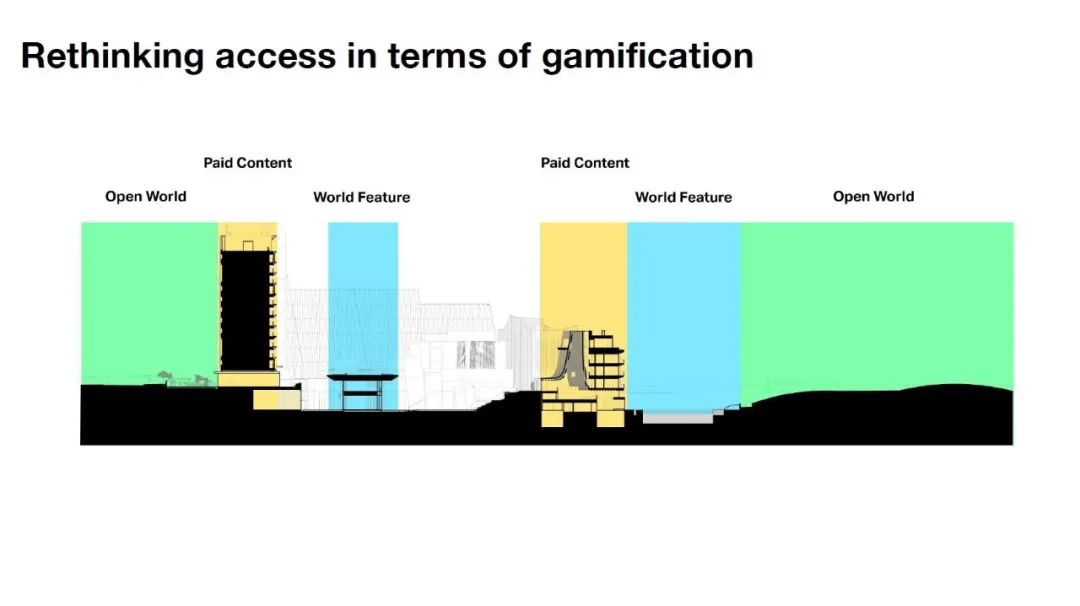
在剖面上,设计师认为这个岛有不同的入口区域。其中,"付费内容 "的区域是酒店和策展式购物,"世界特色 "则是体现麓湖形象的关键景观部分,而 "开放世界 "则是其余的场地。
In section, the designers think of the island as having distinct areas of access. The “paid content” areas being the hotels and curated shopping, the “world features” being key landscape pieces that exemplify the LuxeLakes image, and the “open world” being the rest of the grounds.

设计师的策略由两个平行的部分组成,即现实世界干预和虚拟世界增强,两者协同发挥作用。设计师相信这是下一代的城市主义,特别是在对于现实世界只能进行有限的、策略性的物理改变的情况下。
The strategy compose of two parallel parts, physical intervention and digital augmentation, working together. The designers believe that’s the next generation of urbanism, especially for situations where only limited, strategic physical changes can be made.
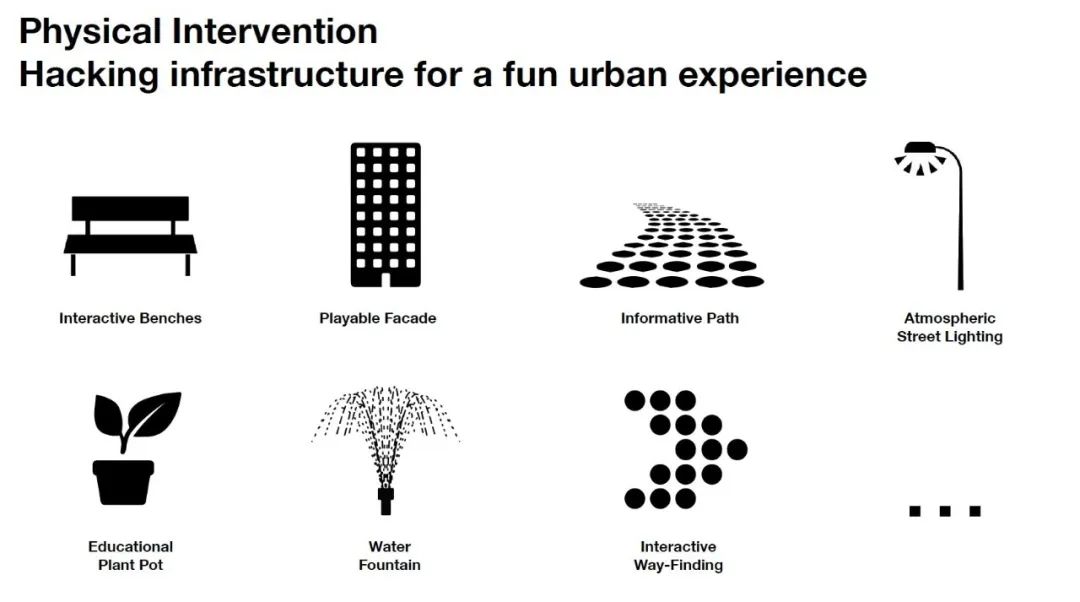
设计师的策略主要专注于通过“入侵”基础设施打造有趣的城市体验,主要包括如上图所示的内容。
With the strategies, the designers are focusing on hacking infrastructure for a fun urban experience. These mainly includes……

而通过开源的微控制器,现实空间可以通过与数码世界的交互,或者直接与物体本身的互动,来实现物理空间与虚拟空间的连接。
And through open source microcontrollers, the physical space can be connected with the digital world through Interaction with digital portals, or directly with the objects themselves.

正如现实空间有基础设施的部分和提供额外乐趣的部分一样,虚拟世界也有其相对应的基础服务和外加的体验提升部分。
Just as the physical environment has an infrastructural part and the parts that provides extra fun, the digital environment also has its parallel to enhance the experience.
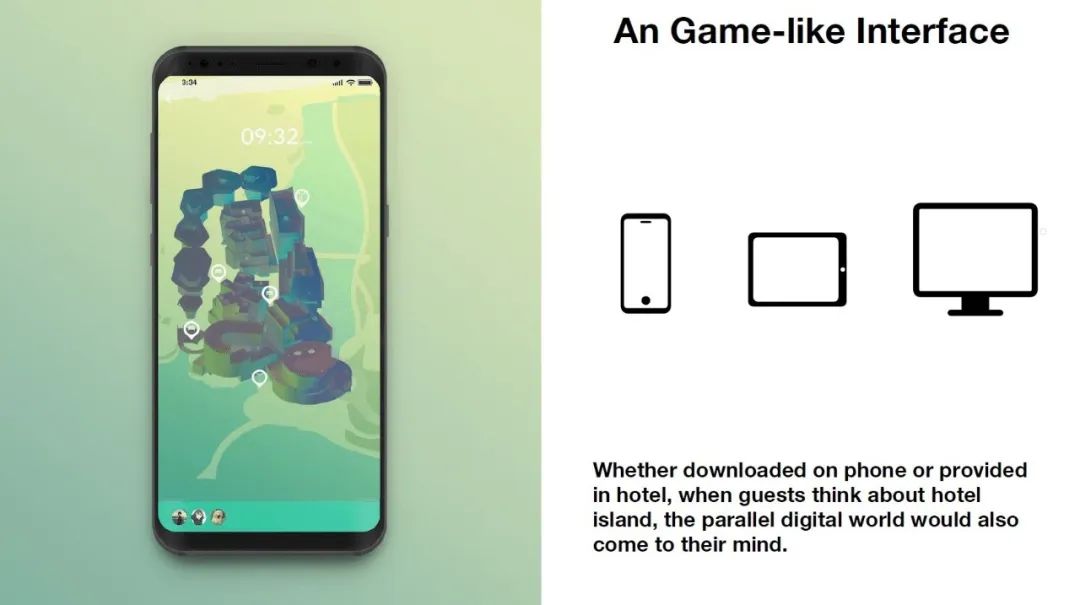
现在,设计师就带大家了解一下游戏化之后的酒店岛。首先,作为酒店岛的客人,他们会通过麓湖的门户,无论是通过手机上下载的应用程序还是由酒店岛上的酒店提供,体验到这个平行于现实世界的虚拟世界。所以当客人想到麓湖酒店岛的时候,他们想到的不应该仅仅是实际的那个地方,而也应该同时包括这个平行的数字空间。
Now the designers are going to walk through the gamified hotel island. First of all, being a hotel island guest, he will experience this parallel virtual world of Hotel Island through the Luxelake portal, whether downloaded on the phone or provided by the hotel. So when guests think about hotel island, it should not only be the physical place, but also this parallel digital space.
主界面看起来的确像个游戏,不过也集成了一些酒店岛的基本功能。可以看到地图上的景点/酒店,可以看到基于地理位置的弹出通知,可以在屏幕下方看到好友资料,并发现今天来游玩的人并不是只有自己,甚至可以看到下一班去往酒店岛的船就要到了。客人也决定选择坐船前往。
The guest looks at the main interface. It actually looks like a game, but integrated with some basic functions. He can see the attractions/hotels on the map, geo-based pop-up notifications, friends profile on the bottom of the screen and he realizes he is not the only one who’s visiting today, and the guest can even see a boat that’s arriving and decide to take a boat as well.


客人到了岛上,看了看手机,确定了一下自己的方向。瑜伽酒店的图案正在变色,通知客人有一些即将举行的活动。客人向左扫一扫,看到了活动详情,点击了按钮进行导航。客人的手机与路边的NFC传感器进行了数据交换,定位他们在酒店岛的位置,路边的LED灯条开始亮起,提示他们在现实环境中的路线。
The guest arrives on the island and look at the phone to orient himself. He notice that the yoga hotel is changing its color, notifying that there’s some upcoming events. The guest swipe left to see the events detail, and click on the button to navigate. The phone exchanges data with the NFC sensor to locate where the guest is on the hotel island, and the LED strip.

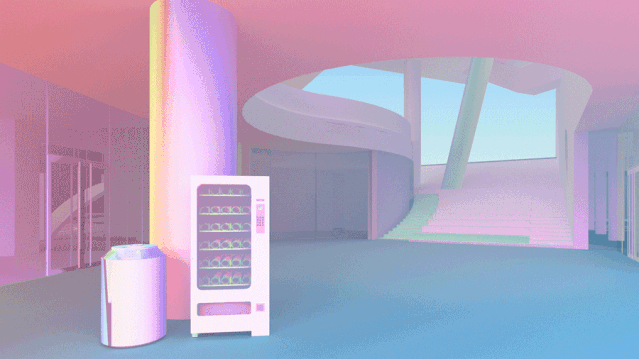

客人走在大街上,看到旁边一栋建筑的大厅里有一台自动售货机。电子屏幕上麓湖的吉祥物—麓鹿正在向他打招呼:今天想来一杯可乐还是奶茶?他觉得可乐很香,于是扫一扫买了可乐。麓鹿在屏幕上提醒你:当你喝完后,把罐子扔进回收箱,就可以获得1点奖励哦。
The guest walks along the street, and sees a vending machine in one of the building’s lobby. The mascot of Luxelake - Luxedeer in the digital screen is greeting: Care for a Coke or a Boba tea today? The guest thinks the Coke would be great, and swipes his phone and get the Coke. Luxedeer reminds him: Once finish the drink, throw the can in the recycle bin, and get one point for reward.


客人走在大街上,看到旁边一栋建筑的大厅里有一台自动售货机。电子屏幕上麓湖的吉祥物—麓鹿正在向他打招呼:今天想来一杯可乐还是奶茶?他觉得可乐很香,于是扫一扫买了可乐。麓鹿在屏幕上提醒你:当你喝完后,把罐子扔进回收箱,就可以获得1点奖励哦。
The guest walks along the street, and sees a vending machine in one of the building’s lobby. The mascot of Luxelake - Luxedeer in the digital screen is greeting: Care for a Coke or a Boba tea today? The guest thinks the Coke would be great, and swipes his phone and get the Coke. Luxedeer reminds him: Once finish the drink, throw the can in the recycle bin, and get one point for reward.

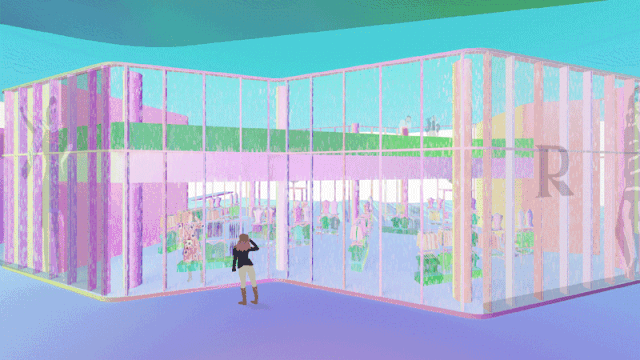
客人沿着商店的橱窗随便逛逛,并注意到商店的玻璃墙其实是水帘,上面由激光投影仪投射着广告。客人看着橱窗里的广告。看到自己在水帘上被投射着最新的时装。这很有意思,知道这是通过隐藏在某个地方的摄像头实现的,它把客人的动作实时地投射到水帘上,但客人还是觉得这像一面魔镜。这套衣服穿他身上意外的不错(大概有滤镜)。客人决定去店里逛逛。水帘裂开,让出一条路。
The guest walks along the shop for window shopping. He notices that the glass wall is actually water curtain, with advertisement projected on them. Looking into the window, he sees himself projected on the water curtain with latest fashion. That’s interesting. He knows this is achieved through a camera hidden somewhere, and lively project the movement onto the water curtain with computer calculating behind, but it’s still feel like a magic mirror. This outfit looks good on him, surprisingly. He decide to enter the store. The water curtain split up to make a way.
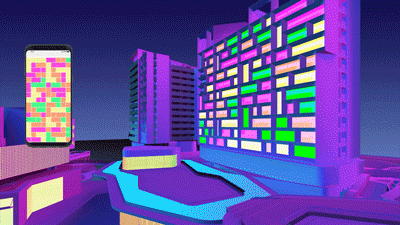
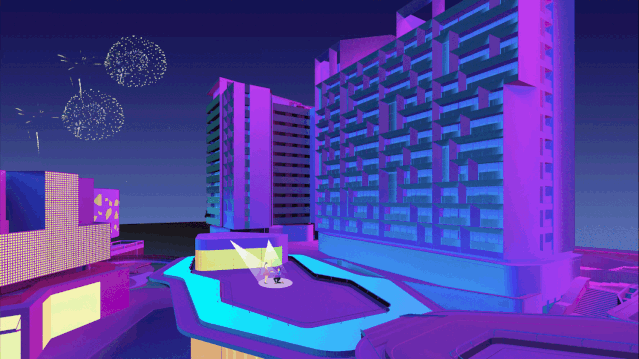
当夜幕降临,酒店和商店里的灯都亮了起来。客人找了一家餐厅,在窗边开始吃晚饭。
他惊讶地发现,酒店岛后面那栋平庸的住宅楼,看起来就像一个正在进行的糖果粉碎游戏。服务员告诉他,他也可以在手机上试着玩一玩,建筑会通过外立面嵌入的无线控制LED灯来回应。
这位客人邀请他的朋友陪他玩。街上的其他人也都在看他们的战斗。过了一小会儿,这位客人输了,于是今天的晚饭变成了他请客。
客人正准备离开餐厅,突然,大楼上的图案变成了一个巨大的闪烁爱心。有音乐和烟花在响起。人群开始欢呼起来。这才意识到有人在店里的露台上求婚。他想,这个结束夜晚的方式还挺浪漫。
When the night falls, all the lights in the hotels and shops light up. The guest finds a restaurant, and starts having dinner near the window.
He is surprised that the banal residential building at the back of the hotel island looks like a ongoing candy crush game. The waiter tells the guest that he can also try playing it on the phone, and the buildings will respond to him through the wireless controlled LED light embedded in the facade.
The guest asks his friend to play with him. Other people on the street are also looking at the battle. After a short while, the guest loses the game and has to pay for the dinner.
The guest is about to the leave the restaurant, suddenly the pattern of the building turns into a huge heart. There’s music and firework going on. People start cheering. He just realizes there’s someone proposing on the terrace of the store. It’s a romantic way to end the night.
特邀客席导师点评
Comments from Guest Tutors
庄子玉
Zhuang Ziyu
这项研究非常吸引人,因为它结合了VR、AR、幻觉——无形世界和现实世界。我会有一个基本的疑问,是关于“场域特定”的。我去过麓湖很多次,也正在万华做一些项目,所以比较了解这个场地。
麓湖就其核心而言是一个地产开发项目,离城市中心稍远。同时,成都又是一个很特别的城市,有自己的特点。当涉及到以城市为背景的电脑游戏如CS时,成都是非常不同于你汇报时所提到的拉斯维加斯或其他城市的。
更重要的是,我认为这个场地“酒店岛”,有很多专门为其设计的建筑特色,这使得研究结果更像一种对已有设施的附加,因此如果你把它放在其他城市,它也可以成立。我的建议是可以将这项研究与其所在场地、所在城市的关系更加清楚地体现出来。
The presentation is very attractive as a combination of VR, AR, illusion—the intangible world and physical world. I may have a fundamental question about “site-specific”. I have been in LUXELAKES, the site, for many times, and I am also working for them on some projects, so I know the site well.
LUXELAKES is at its core a real estate development project, which is located a bit far from the city center of Chengdu, and as you know, Chengdu is a very particular city and has its own features, different from Vegas or other cities that you have described in your presentation, especially if it comes to taking the city as the backdrop of computer games such as CS.
What’s more, I think the site, the Hotel Island, has a lot of specifically designed architectural features, which makes the research outcome more like an added-on experience for the site, leading to the result that if you put it in other cities, it could also work. Therefore I suggest that it could be made clearer in terms of what is its link with Chengdu, or this site.
方元
Andy Fang
这个想法很好,特别是从试图解决社区和公众参与的不活跃这一现象的角度来看;同时,我对智慧城市技术很感兴趣,尤其是AECOM目前也在成都开展5G智慧城市项目。从我的工作经验来看,有一件事给我感触很深,即关于“什么是智慧城市”,不同的利益相关者有不同的理解——像ICT公司更注重算法,政府则考虑操作和平台化,但中间有一样很重要的东西是缺失的,即在公众的眼中,什么才是智慧城市。
当我们谈到公众参与,如果你参加过剑桥的社区议会,我相信你会觉得它很无聊、漫长,而且低效。但若将游戏作为一种媒介,我认为这可以改变世界、让人们更多地参与到公共事务中。
那么,这其中就有一个问题。我想我同意子玉所说的,即这项研究需要更加考虑它的“场域特点”;而我思考的角度是:成都在不遗余力地推行其“公园城市”的概念,我们有很多的公园、公共空间,但是如果你对中国稍有了解,就会知道在中国历史上,城市不存在“公共空间”,唯一我们与彼此互动的地方是在庭院或在寺庙;因此,如何能够定义适合中国的公共空间社交模式是一个真正的问题。
因此,当谈到游戏化城市或者“黑客入侵”这座城市,我建议你们考虑如何去数字化公共空间的使用,记录人们如何使用空间或与空间互动,如何真正在公共空间进行消费——这对于很多中国城市将是非常宝贵的。
The idea is fabulous, especially from the angle of trying to tackle the inactiveness of community and public participation; and smart city technologies interests me especially when AECOM is also working on 5G smart city projects in Chengdu now. From my experience with smart city projects, one thing that really strikes me is different stakeholder has different views of what a smart city is, like ICT companies always think about algorithm, government always think about operation and platform and something is really missing in-between, which is what is the smart city in the eyes of the public.
When we talk about public participation, if you guys go to a community meeting in Cambridge, I am sure you will feel that it is really boring, long, ineffective, but with the gaming philosophy I think it is something that you can change the world, making people more engaged in the public participation.
One question, I think I agree with Ziyu that the project has to be more location specific, what I am thinking about is that Chengdu is really promoting hard its concept of “Park City”, we have a lot of parks, public spaces in Chengdu right now, but if you studied about Chinese cities you will know, historically Chinese cities did not have public spaces, the only place we interact with each other is in a courtyard or in a temple, so how to use the public spaces more effectively is really a issue now.
When it comes to gamifying the city or hacking the city, I suggest you consider about how to digitalize the use of public spaces, how to record how people use the spaces or interact with the spaces, how do they really spend money in the public spaces, and that would be very valuable for a lot of Chinese cities.
Andrew Stokols
如果你试想自己作为一个酒店客人,这个想法是非常有趣的,具有很大的潜力。但作为客人,你也想与城市互动,而不仅仅是酒店周围的东西。因此我的建议是,尝试将虚拟体验与研究场域范围之外的事物结合起来,为客人打开接触到城市资源的路径。
If you think of yourself as a hotel guest, the idea is very interesting and has great potential. But as a guest, you want to interact with the city as well, not just what there is around the hotel. What I would like to suggest is that try to integrate the virtual experiences with the things beyond the scope of the site, and allow the guests accesses to the recourses in the city.
特邀客席导师介绍
About the Guest Tutors
庄子玉
Ziyu Zhuang
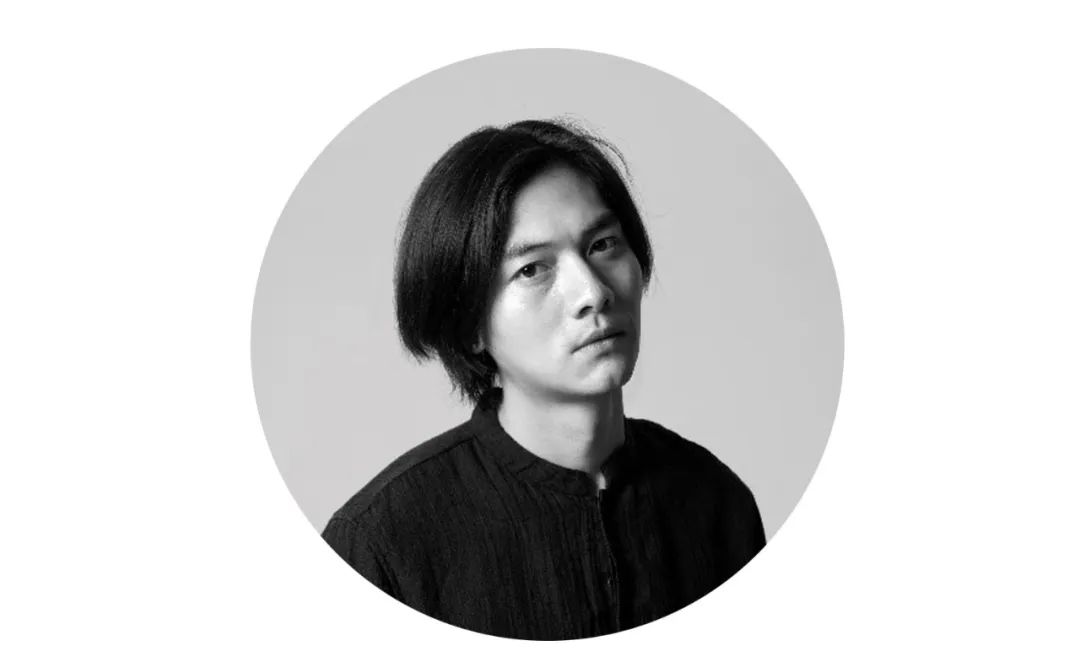
建筑师,德国RSAA设计集团合伙人
美国哥伦比亚大学建筑与城市设计硕士,师从伯纳德·屈米(Bernard Tschumi)和肯尼思·弗兰普顿(Kenneth Frampton)。凭借腔体教堂、铜陵山居、鼓楼7号院、云顶57餐厅、南京凯悦臻选、成都温江悦榕庄、济宁文化中心、上海新天地“坛城”等项目,庄子玉历获纽约Architizer A+文化类大奖、世界建筑节WAF/INSIDE年度装置大奖、英国WAN年度最佳住宅、意大利THE PLAN特别提名奖、德国设计奖大奖、德国ICONIC至尊奖、意大利A'金奖、DFA亚洲最具影响力设计奖金奖、法国国际创新设计大奖最高奖、亚太区室内设计大奖金奖、德国iF设计奖、德国红点奖、中国勘察设计协会BIM大奖、中国建筑装饰协会最高奖项之设计艺术成就奖等奖项。
庄子玉是美国建筑师协会(AIA)联合会员,美国绿建协会(USGBC)认证专家(LEED AP),纽约建筑师联盟(Architecture League of New York)成员,2018-2019年天津大学建筑学院特聘研究生国际实验班导师,并曾在香港大学、哥伦比亚大学、纽约帕森设计学院、清华大学和明尼苏达大学作为客座评图。
Architect, Partner of RSAA GmbH
Learning after Bernard Tschumi and Kenneth Frampton, Ziyu Zhuang has been granted the Master’s degree of Architecture and Urban design in Columbia University, USA. With the projects such as Zhangjiagang Church, Tongling Recluse, Courtyard No.7 at The Drum Tower, The Top of Cloud, Nanjing The Unbound Collection by Hyatt, Chengdu Wenjiang Banyan Tree Hotel, Jining Culture Center Urban Design, Shanghai “The Cloud Maze” and other projects, he has won Architizer A+ Award, World Architecture Festival WAF/INSIDE Design Award – Display Winner, WAN Awards-House of the Year, THE PLAN AWARD-HONORABLE MENTION, German Design Award-winner, ICONIC AWARDS: Innovative Architecture-Best of Best, A’ Design Award, DFA Awards-Gold Award, INNODESIGN PRIZE - winner, APIDA-Gold Award, iF DESIGN AWARD, Reddot award, the BIM Award of China Engineering & Consulting Association, and the Design and Art Achievement Award, one of the top prizes of China Building Decoration Association.
As the member of AIA, the member of Architecture League of New York and as the LEED AP of USGBC, Ziyu Zhuang has been invited to be the visiting professor of Tianjin University School of Architecture in 2018-2019, also as a guest critic at the University of Hong Kong, Columbia University, New York Parsons School of Design, Tsinghua University and University of Minnesota.
方元
Andy Fang
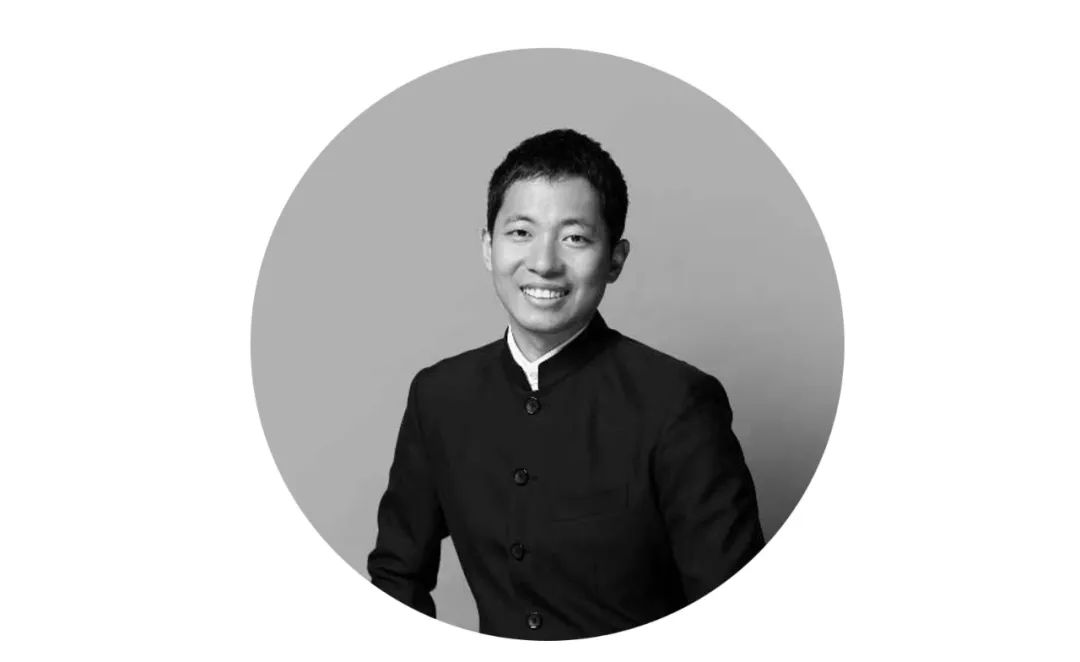
AECOM 助理董事 城市经济规划副总监
美国注册城市规划师 (AICP)
美国规划协会 (APA) 高级顾问
具备多年城市发展战略规划和地产投资的国际经验,善于洞察各类城市发展规律,并根据城市特征制定突破性的发展战略,具备战略规划、经济规划、智慧城市、小城镇及乡村振兴、历史遗产保育、影响力投资、海外地产投资与地产金融、政府和社会资本合作、全球资本技术整合等项目经验。
过去十二年间,方元曾多次受联合国教科文组织、美国国务院、能源部、住建部、中国国家发改委、自然资源部、国家文物局、外国专家局,以及中美两国地方政府邀请,作为规划专家参与以可持续发展、智慧城市等主题的国际级咨询项目。此外,方元还曾为600余名市长进行过城市规划培训,并参与过总资产价值超20亿美元的跨境地产投资项目。
工作经历:
2019—至今 AECOM华西区,助理董事,城市经济规划
2018—2019 华夏幸福国际,旧金山,美国,高级区域经理
2016—2017 华发实业股份,旧金山,美国,地产投资经理
2010—2014 美国规划协会 (APA),华盛顿,美国,国际项目主任、市长培训项目负责人
2008—2010 美国规划协会 (APA),华盛顿,美国,中国项目官员
教育经历:
2014—2016 哈佛大学,设计学硕士
2007—2009 密歇根大学,城市与区域规划硕士
2002—2006 加拿大圣托马斯大学,历史学、社会学双学士
部分文章发布:
《可持续城市金融指导》
发布:世界资源研究所(2019)
《TOD规划、融资与实施中的十大难题》
发布:世界资源研究所(2019)
《不动产税助力历史街区保育的国际经验》
发布:《瞭望新闻周刊》(2016)
《中国新城新区发展报告》
发布:中国国家发改委(2015)
《历史保护,终究是为了挽留生活》
发布:纽约时报(2014)
《打造智慧城市,不能靠技术堆砌》
发布:纽约时报(2013)
《美国规划ABC》
发布:美国规划协会(2011)
《碳交易与国家战略白皮书》
发布:美国规划协会(2009)
Associate Director, Economics, AECOM
AICP
APA Senior Consultant
10+ years of urban development expertise with solid international project management experience, specialized in urban planning, smart city, climate resilience, infrastructure and real estate investment, transit-oriented development, urban transportation, social development, and public-private partnership.
Proven financial analysis, project appraisal and modeling skills, with $10 billion USD worth of urban development projects underwritten in U.S. and China.
Extensive experience in stakeholder engagement with worldwide network with NGOs, governments and businesses including U.S.’ Department of Housing and Urban Development, Environmental Protection Agency, and China's National Development and Reform Commission, Ministry of Natural Resources, and international organizations including UNESCO, UNDP, UN-Habitat and the World Bank.
Working Experience:
Nov 2019—Present Associate Director, Economics, AECOM, Chengdu
May 2018—Nov 2019 Senior Manager, Region Management, CFLD US, San Francisco
July 2016—Oct 2017 Real Estate Investment Manager, Huafa Group, San Francisco
Dec 2008—Aug 2014 International Program Manager, American Planning Association
Aug 2014—present Consultancy, International Program Manager, American Planning Association
Education:
Sept 2014—May 2016 Master in Design Studies in Real Estate and Built Environment, Harvard University
Sept 2007—April 2009 Master in Urban and Regional Planning, University of Michigan
Sept 2002—April 2006 Bachelor of Arts - Major in History, Minors in Sociology, St. Thomas University
Publications:
"Learning Guide on Sustainable Urban Finance"
Published by World Resource Institutte(2019)
"Transit- Oriented Development: 10 Questions about Planning, Financing and Implementation"
Published by World Resource Institutte(2019)
"Global best practices on conserving historic properties with property tax strategies"
Published by Outlook Weekly(2016)
"China's new town development report"
Published by National Development and Reform Commission(2015)
"Extending lives with historic conservation"
Published by New York TImes Chinese Website(2014)
"building smart city isn't a game of technology collage"
Published by New York TImes Chinese Website(2013)
"American Planning ABC"
Published by American Planning Association(2011)
"Carbon trade and national strategy"
Published by American Planning Association(2009)
Andrew Stools
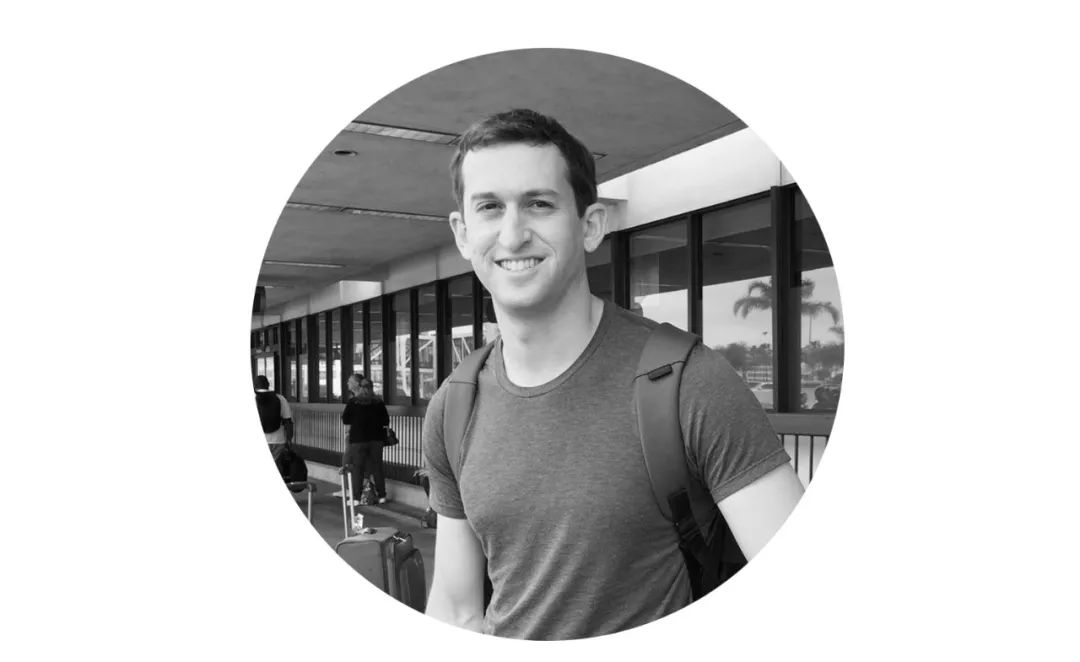
麻省理工学院城市研究与规划系,博士(在读)
哈佛大学设计学院,城市规划,硕士
加州大学伯克利分校,历史与城市规划,全球贫困与实践,本科
Andrew Stokols是一位城市规划师/设计师和研究员。目前正在探索创新经济的空间方面之间的关系,城市设计和创新之间的关系,以及空间趋势,如经济活动集中在“超级城市”,如何推动了全球民粹主义的崛起。
MIT in the Department of Urban Studies and Planning, PhD candidate
Harvard Graduate School of Design, urban planning, master
UC Berkeley, history and urban planning, global poverty and practice, undergraduate
Andrew Stokols is an urban planner/designer and researcher. His research currently explores the relationship between the spatial aspects of the innovation economy, the relationship of urban design and innovation, and how spatial trends such as the concentration of economic activity in “superstar cities” have fueled the rise of global populism.
课程教学组
Workshop Teaching Team
Brent D. Ryan
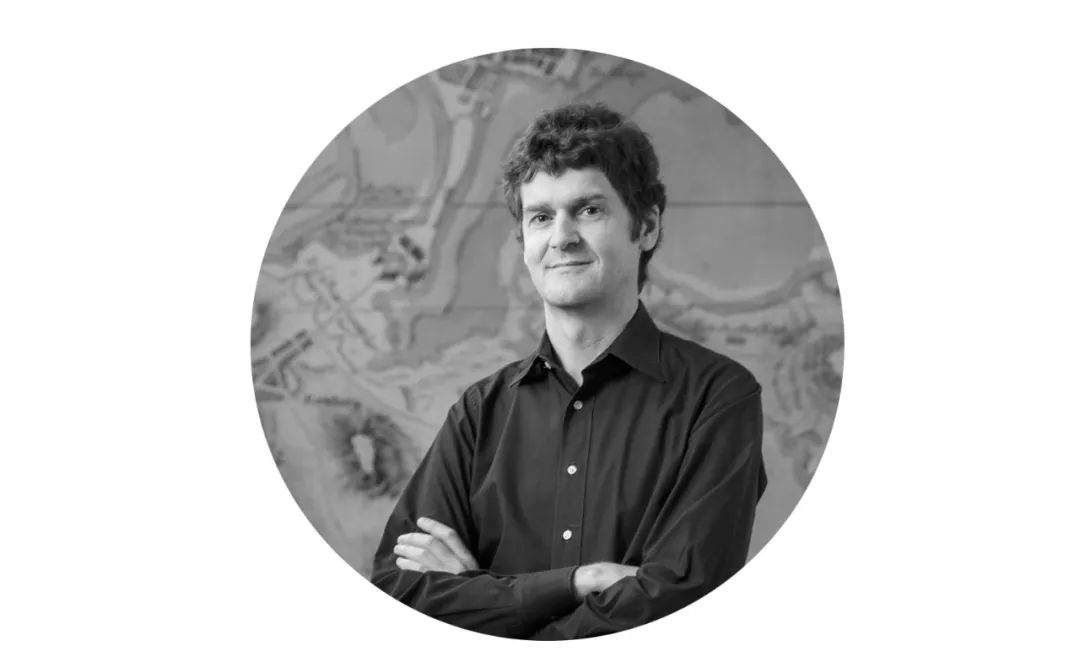
麻省理工学院城市设计与公共政策副教授
麻省理工学院城市研究与规划系城市设计与发展小组负责人
MIT CSAP教授顾问
Associate Professor of Urban Design and Planning
Head, City Design and Development Group
MIT CSAP Faculty Advisor
Brent D. Ryan是麻省理工学院城市研究与规划系城市设计与开发小组负责人兼城市设计与公共政策副教授。他的研究专注于当代城市设计的美学和政策,尤其是在当前和紧迫的问题(例如去工业化和气候变化)方面。Ryan教授的第一本书《Design After Decline: How America rebuilds shrinking cities》被Planetizen评选为2012年十大最佳城市规划书之一,而他的第二本书《The Largest Art》则由MIT Press于2017年出版。
Brent D. Ryan is Head of the City Design and Development Group and Associate Professor of Urban Design and Public Policy in MIT’s Department of Urban Studies and Planning. His research focuses on the aesthetics and policies of contemporary urban design, particularly with respect to current and pressing issues like deindustrialization and climate change. Professor Ryan’s first book Design After Decline: How America rebuilds shrinking cities, was selected by Planetizen as one of its ten best urban planning books of 2012, and his second book, The Largest Art, was published by MIT Press in 2017.
戎航
Helena H Rong

麻省理工学院理学城市研究硕士、康奈尔大学建筑学学士
麻省理工学院房地产创新实验室研究项目负责人
“成都城市调研:激发中国新发展”客座讲师
MIT CSAP联合创始人
Master of Science in Architecture Studies: Architecture and Urbanism (SMArchS Urbanism), Massachusetts Institute of Technology
Cornell University Bachelor of Architecture
Research Associate at MIT Real Estate Innovation Lab
Urban Hacking Chengdu: Activating New Development in China, Co-lecturer
MIT CSAP Co-Founder
贺梦琪
Mengqi Moon He

麻省理工学院建筑与城市在读理学硕士,南加州大学建筑学学士
“成都城市调研:激发中国新发展”课程助教
MIT CSAP 联席主席
Master of Science in Architecture Studies: Architecture and Urbanism (SMArchS Urbanism), Massachusetts Institute of Technology
Bachelor of Architecture, University of Southern California
Urban Hacking Chengdu: Activating New Development in China, Teaching Assistant
MIT CSAP Co-President



